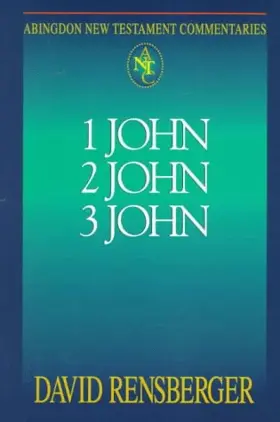

1 John 2 John 3 John
in Abingdon New Testament Commentaries
Pages
174 pages
Publisher
Abingdon Press
Published
10/1/1997
ISBN-13
9780687057221
After years of close contact with the Johannine epistles, David Rensberger discusses the numerous puzzles--linguistic, literary, and historical--that characterize these brief texts. His comments on their theological and ethical significance illumines the meaning and interrelationship of faith and love. In short, Rensberger skillfully demonstrates that despite the Johannine epistles' existence on the periphery of the New Testament canon, they nevertheless touch on the heart of its message. Inquiry includes relationship of these epistles to the gospel of John, Christology, Dualism, Eschatology, the Church, and Salvation.
Collections
This book appears in the following featured collections.
- New Testament Commentaries & Monographs by Princeton Theological Seminary
Reviews
The select bibliography of this admirable commentary shows that, already in the eighties and nineties, there are sixteen commentaries on these Epistles (one of them 800 pages long) and some thirty-eight relevant articles. The author of this book helpfully presents the discussion and indicates the questions of interpretation and theology that readers should consider. The General Editor says that the Abingdon New Testament Commentaries "are intended to exemplify the tasks and procedures of careful, critical biblical exegesis." They "are written with special attention to the needs of theological students," but "will also be useful for students in upper-level college or university settings, as well as for pastors and other church leaders." It cannot, however, be assumed that such a group of readers (who are not required to know Greek) will be capable of following the closely argued presentation of this commentary. For instance, it is well known that the syntax of 1 John is perplexing, and Rensberger wrestles with it frequently. In 2:3-6 who is "he" and "him" (a)ut/os and )eke=inos)? In vv. 7-8 "the grammar and logic are very obscure." In 2:27 there is "frustratingly obscure syntax." "1 John 3:19-20 is one of the most obscure sentences in the New Testament," and 4:2 is so ambiguous that there are three possible translations. And how in 2 John should you translate )erx/omenon )en sark/i when you have in mind 1 John 4:2 )en sark\i )elhluq/uta? Anyone with a Greek Testament will understand the problems, but modern translations usually smooth out the syntax. The commentary should therefore be accompanied by a wooden translation (even though this would increase the length and price of the book) so that all readers can struggle with the wording—as the writer may have intended them to do.
[Full Review]

